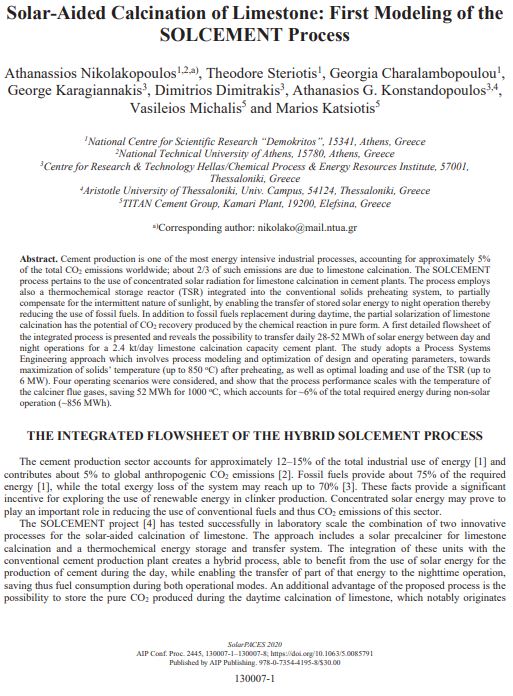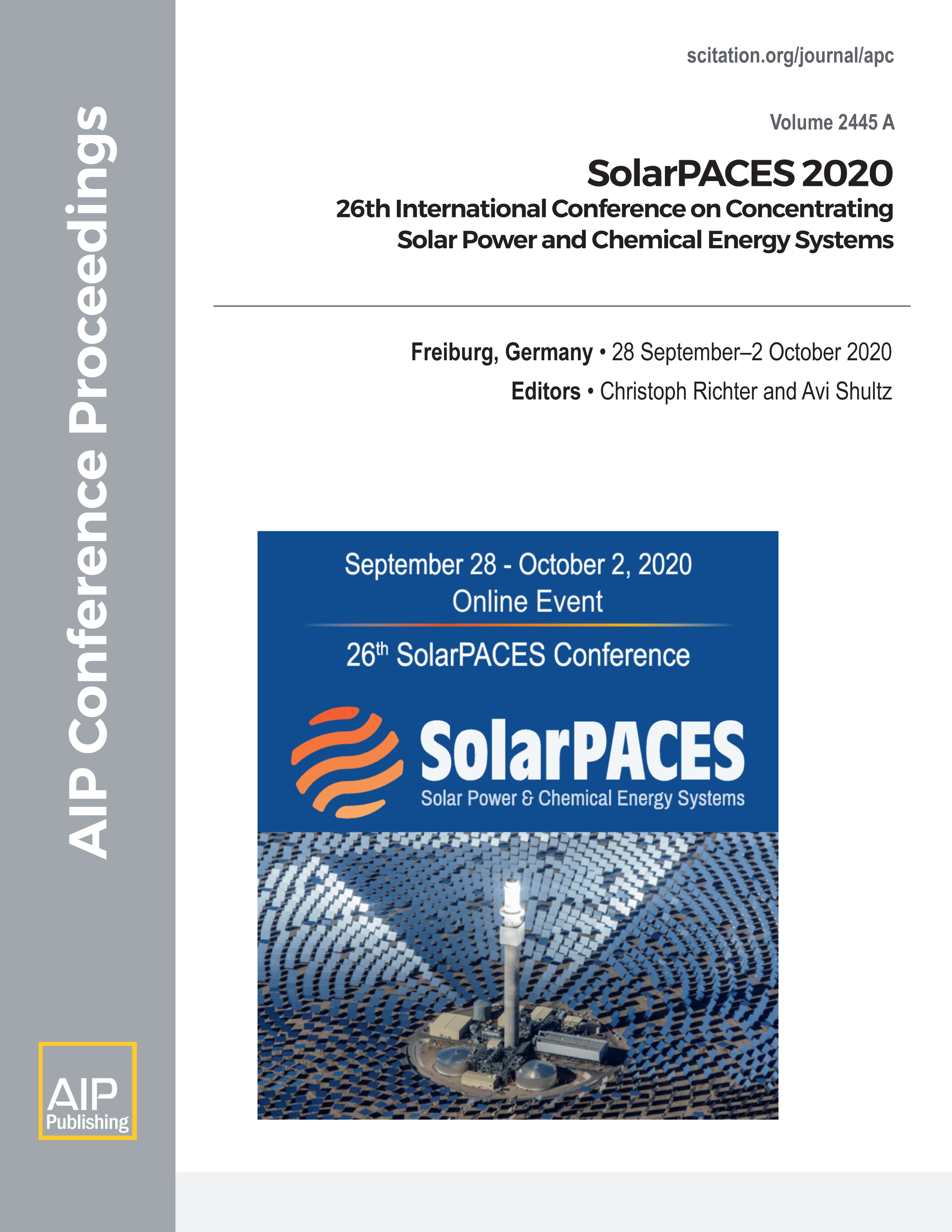


2022 Publication included in AIP Conference Proceedings, 2445, following the results in the 26th SolarPACES 2020 (Solar Power and Chemical Energy Systems, in September 28-October 2):
Nikolakopoulos A., Steriotis T., Charalambopoulou G., Karagiannakis G., Dimitrakis D., Konstandopoulos A.G., Michalis V., Katsiotis M. (2022) "Solar Aided Calcination of Limestone: First Modeling of the SOLCEMENT Process", AIP Conference Proceedings, 2445, 130007, https://doi.org/10.1063/5.0085791.
Abstract:
Cement production is one of the most energy intensive industrial processes, accounting for approximately 5% of the total CO2 emissions worldwide; about 2/3 of such emissions are due to limestone calcination. The SOLCEMENT process pertains to the use of concentrated solar radiation for limestone calcination in cement plants. The process employs also a thermochemical storage reactor (TSR) integrated into the conventional solids preheating system, to partially compensate for the intermittent nature of sunlight, by enabling the transfer of stored solar energy to night operation thereby reducing the use of fossil fuels. In addition to fossil fuels replacement during daytime, the partial solarization of limestone calcination has the potential of CO2 recovery produced by the chemical reaction in pure form. A first detailed flowsheet of the integrated process is presented and reveals the possibility to transfer daily 28-52 MWh of solar energy between day and night operations for a 2.4 kt/day limestone calcination capacity cement plant. The study adopts a Process Systems Engineering approach which involves process modeling and optimization of design and operating parameters, towards maximization of solids’ temperature (up to 850oC) after preheating, as well as optimal loading and use of the TSR (up to 6 MW).
Four operating scenarios were considered, and show that the process performance scales with the temperature of the calciner flue gases, saving 52 MWh for 1000oC, which accounts for ~6% of the total required energy during non-solar operation (~856 MWh).


